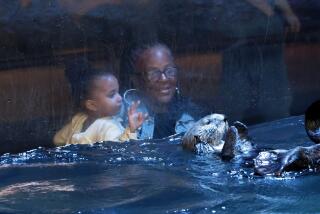Misinformation and the Surrogate Issue
- Share via
It seems that the pending decision in the Baby M case--where a surrogate mother and the biological father are disputing custody of the infant--has come to revolve around the best interests of the baby. In the social evolution of attitudes toward children and parental rights, this is a giant leap forward. Not so long ago children were simply considered parental property, more specifically, their fathers’ possessions.
This was largely because until very recently, children were understood to be entirely products of the male line. Common wisdom had the father planting his seed in the mother’s womb, which provided nourishment and protection. Women, in other words, were seen as conveniently portable incubators. The developing embryo, however, carried only the father’s “germ plasm.” With this understanding of heredity, it was inevitable that children involved in marital disputes were inevitably awarded to the father.
The pattern changed with the emergence of the science of human genetics in the early part of this century. Suddenly it was clear that both parents contribute equally to the genetic composition of their offspring. This knowledge, plus psychological and ethological research into the behavior known as “bonding,” whereby an infant establishes a dependency upon an adult and the adult responds by exhibiting a strong sense of responsibility and attachment toward the infant, has altered popular as well as legal attitudes toward motherhood.
Animal research later demonstrated that many infant monkeys died or developed pathological behavior when they were deprived of their mothers’ presence. The concept of the mother-child “dyad” as the primary social unit has ancient roots that struck a familiar chord in Western culture. This renewed appreciation of the biological importance of mothers has been reflected in contemporary legal decisions that treat biological mothers more sympathetically than biological fathers.
But a closer examination of recent animal studies reveals that the bonding of an infant to an adult is neither as immediate as some people assume, nor as exclusive of other individuals. Infants of many species bond to whichever animal they are with at a specific time. This time is almost never the few moments after birth. Depending on the species, mothers bond to their infants at several weeks of age, if they happen to be ground squirrels, at perhaps 15 minutes if they are wildebeests, as late as three months if they are lions or kangaroos. The experience of birth does not oblige a mother to bond to her biological offspring, or the offspring to its mother. Indeed, it is not unknown among the great apes for a mother to adopt another female’s infant with the apparent acquiescence of the birth mother.
Significantly, among the apes, the species closest in behavior to ourselves, fathers are known to take over the care of abandoned infants.
Some of the discussion surrounding the surrogate mother issue has focused on the mysterious nature of female hormones. Women, it has been suggested, cannot predict how they will react to a particular pregnancy and birth, and cannot therefore be expected to be held to any contract. This echoes 19th-Century arguments against female education. Stress on the brain, some men then argued, results in damage to the womb. Females are not only unfit for higher education, but education would endanger their reproductive abilities.
Unstable women may well be upset by consequences of relinquishing an infant. But that is no reason to argue that all women are inherently unstable.
Men as well as women bond to impending offspring, witness instances of hysterical pregnancies where fathers-to-be have swelled in unison with wives.
The bonding process in human beings is at least as complex as that in monkeys and apes. It is a matter of repeated eye contact, cuddling and an incremental build-up of mutual experiences. Adoptive parents bond as effectively as biological parents.
The surrogate issue is sticky enough without clouding the air with simplistic inaccurate references to the hormonal mystique of maternal bonding.






